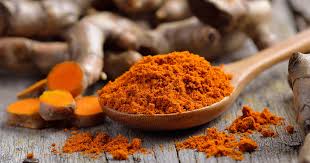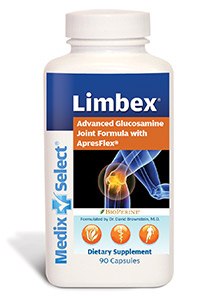We have all heard about arthritis. But, do we know the facts on arthritis? This article will help you to know them.
What is Arthritis?
Arthritis (also known as joint inflammation) is inflammation in one or more joints that causes pain and stiffness. It is a condition that can worsen with age. Actually, “arthritis” the word means, “inflamed joint.”
There are different types of arthritis and each one has different causes including underlying diseases, infections, and general wear and tear. With more than 100 varieties, arthritis is far from simple.
Symptoms usually include swelling, pain, stiffness and, reduced range of motion and Flare-ups can be unpredictable.
Arthritis is the foremost cause of disability in the US. Surveys have revealed that millions of individuals are limited in their ability to climb stairs, kneel, bend, walk, or participate in regular social activities such as visiting with family and friends or shopping and running errands. For those still employed, arthritis can make daily routines more and more challenging.
Common Types of Arthritis
There are quite a few types of arthritis. The ones that develop most often are found below.
Osteoarthritis – This is the most widespread category of arthritis. The ends of the bones are covered by a slippery, cushioning material known as cartilage. Cartilage acts as a shock absorber and allows the bones to slide smoothly against each other. However, with advancing age, injuries, or infections, the cartilage may begin to deteriorate. This leaves the bones unprotected and they start to grind or scrape against each other whenever movement takes place. Small holes and fractures commence to appear on the bone surface, and bony growths—called osteophytes or bone spurs—may start to appear. Occasionally, small bone fragments or bits of cartilage breaks off and intervene with the movement of the joint, resulting in more swelling and pain.
Ultimately, the fundamental bone, ligaments, blood vessels, nerves, and muscles as well become irritated and inflamed also.
Rheumatoid Arthritis – This is the second most prevalent type of arthritis. Rheumatoid arthritis affects numerous additional joints, including the hands, wrists, elbow, shoulders, and feet. In this kind of arthritis, an individual’s own immune system erroneously commences attacking the tissues in the joints—in particular, the synovium, which is a thin lining over the bones that helps keep the joints moving well. Additional body tissues may additionally be targeted, including muscles, blood vessels, heart, lungs, nerves, and skin. The majority of cases appear prior to the age of 60 but some appear after. Rheumatoid arthritis is often a life-long, progressive disease.
Gout – Gout is triggered by the build-up of uric acid crystals inside the joint where it produces severe throbbing pain, swelling, warmth, and redness.
Infectious Arthritis – This variety of arthritis comes about when an infection spreads into a joint.
Who Get Arthritis?
Roughly 50 million adults have been identified with some type of arthritis in the US, including rheumatoid arthritis, osteoarthritis, fibromyalgia, lupus, and gout. Moreover, about half of Americans above the age of 65 have been told that they have arthritis by their healthcare provider. However, it can commence developing at any age, especially after an injury such as to the knees and hips. Young adults with knee injuries have six (6) times the risk of experiencing osteoarthritis in that joint by age 65 years. Individuals with hip injuries are three (3) times more probable. Therefore, the significance of exercise at any age far overshadows the chance of injury.
Movement is beneficial. Continually active individuals are far better off than those who lead a sedentary lifestyle. This can be difficult when an individual is in pain, but it doesn’t have to intensive. For example, water exercise, a brief bike ride, or walking daily can be sufficient.
Women are somewhat more likely to receive a diagnosis of arthritis than men are, even though gout is more usual in men. Additionally, if an individual is overweight or obese, the chance of developing arthritis increases. The excess weight puts added pressure on joints and muscles.
It is important to note that Children get arthritis, too. As a matter of fact, almost 300,000 individuals in the US under the age of 18 suffer from rheumatoid arthritis, affecting girls more than affecting boys.
Treating Arthritis
Unfortunately, there isn’t a cure for arthritis, but early diagnosis and treatment are essential. The first step in treating arthritis is managing the

pain, followed by advancing strength through physical therapy and focusing on other lifestyle issues, such as healthy body weight and smoking termination. Surgery is another alternative, which is particularly effective for patients with hip and knee concerns.
Weather can be a factor. The climate can contribute to an individual’s pain. Actually, when the atmospheric pressure changes, arthritis can flare-up. That is when it is a good time to use ibuprofen (an anti-inflammatory), apply ice, and begin stretching for relief from the cold weather.
Both hot and cold can be used for relief. For aching joints, it helps out to apply a covered ice pack to reduce the primary inflammation, and then, after 48 hours, change to heat to open up the blood vessels for added relief.
Treating Arthritis Naturally
Doctors can prescribe medication for pain relief of arthritis, but they often recommend natural methods, also.
An individual must talk to their doctor before attempting any remedy for

arthritis, whether it involves medication or not. Below are some suggestions to consider.
Manage weight – weight can have an immense impact on arthritis symptoms. Extra weight puts more pressure on the joints, especially the knees, hips, and feet.
Guiding principles from the American College of Rheumatology and Arthritis Foundation (ACR/AF) strongly recommend losing weight if an individual has OA and overweight or obese.
A physician can help an individual set a target weight and design a program to help him or her reach that target.
*Reducing the stress on the joints by losing weight can help:
- decrease pain
- improve mobility
- prevent future damage to the joints
Get exercise – If an individual has arthritis, exercise can help manage weight, keep their joints flexible, strengthen muscles around their joints, which offers more support.
Current recommendations strongly advise starting a suitable exercise program. Exercising with a trainer or another individual may be particularly beneficial, as it increases enthusiasm.
Good options include low-impact exercises, such as:
- walking
- cycling
- tai chi
- water exercises
- swimming
Hot and cold therapy – As mentioned earlier, hot and cold treatments can help alleviate arthritis pain and inflammation.
- Heat treatments can include taking an extended, warm shower or bath in the morning to help ease stiffness and utilizing an electric blanket or moist heating pad to lessen discomfort overnight.
- Cold treatments
can help relieve joint pain, swelling, and inflammation. This can be achieved by wrapping a gel ice pack or a bag of frozen vegetables in a towel and applying it to painful joints for quick relief. One should never apply ice straight to the skin.
- Capsaicin, an active component that comes from chili peppers, is an ingredient of some topical ointments and creams that can be bought over the counter. These products provide warmth that can relieve joint pain.
A Healthy diet – This is a universal component for any condition. A diet that is plentiful in fresh fruits, vegetables, and whole foods can help boost the immune system and overall health. There is some evidence that dietary choices can affect people with both RA (rheumatoid arthritis) and OA (osteoarthritis).
A plant-based diet supplies antioxidants, which can help decrease inflammation by eliminating free radicals from the body.
Conversely, a diet plentiful in processed foods, saturated fat, red meat, added sugar and salt may worsen inflammation, which is an element of arthritis. These foods can also contribute to other health conditions, including high cholesterol, high blood pressure, heart disease, obesity, and other complications, so neither are they beneficial for individuals with arthritis.
The current OA course of action guidelines does not recommend taking vitamin D or fish oil supplements as a treatment, but eating foods that contain these nutrients as part of a balanced diet may play a role in overall well-being.
Turmeric – Turmeric, the yellow spice frequently found in Indian meals, contains a chemical called curcumin. It has antioxidant and anti-inflammatory properties. Research
suggests it may help reduce arthritis pain and inflammation.

In an animal study that the National Center for Complementary and Integrative Health observed, scientists gave turmeric to rats. Results showed that it lessened inflammation in their joints.
More research is required to show how turmeric works, but the future for this spice is promising.
Herbal Supplements – Many herbal supplements may reduce joint pain, although scientific research has not confirmed that any specific herb or supplement can treat arthritis.
Some of these herbs include:
- Boswellia
- bromelain
- devil’s claw
- ginkgo
- stinging nettle
- thunder god vine
Although scientific research has not confirmed that any specific herb or supplement can treat arthritis, they can be a helpful aid, even alongside other treatments.

The Food and Drug Administration (FDA) does not observe herbs and supplements for excellence, integrity, or safety, so one cannot be sure exactly what a product contains. Therefore, it is best to purchase from a reliable source. I whole heartedly trust this company.
It is always wise to talk to a physician before trying a new supplement, as some can cause side effects and dangerous drug interactions.
Preventing Arthritis
Arthritis cannot always be prevented. Some circumstances, like advancing age, family history, and gender (many varieties of arthritis are more frequent in women), is out of an individual’s control.
There are more than 100 different types of arthritis. Each type advances differently, but all are painful and can progress to loss of function and deformity.
There are some healthy habits that can be practiced to reduce the risk of developing painful joints as age advances. Many of these practices such as exercising and eating a healthy diet prevent other diseases, also.
Consume Fish – Certain fish contain a plethora of omega-3 fatty acids, which is a healthy polyunsaturated fat. Omega-3s have many health benefits, and they can decrease inflammation in the body.
A study in Annals of the Rheumatic Diseases found that women who consume fish frequently might be at lower risk for rheumatoid arthritis. The United States Department of Agriculture (USDA) advocates consuming fish high in omega-3s — like salmon, trout, mackerel, and sardines — twice a week. Wild-caught fish is usually suggested over farmed fish.
Foods to Avoid – A number of foods can make arthritis more severe by adding to joint inflammation, weight gain, or both. Foods to be avoided with arthritis are:
- Alcohol
- Dairy
- Fried or grilled foods
- Oils, such as corn, sunflower, safflower, peanut, and soy oils
- Red meat
- Refined carbohydrates such as biscuits, white bread, and pasta
- Salt
- Sugars including sucrose and fructose
Avoid injury – Over time, joints can commence wearing. However, when joints are injured— such as while playing sports or due to an accident —the cartilage can be damaged and lead it to wear out more rapidly.
In order to avoid injury, it is always wise to use the proper safety equipment while performing sports and observe the correct exercise techniques.
Protect the joints – Practicing the right techniques when sitting, working, and lifting can aid in protecting joints from every day strains. Such as, lift with the knees and hips — not the back when picking up objects.
Also, carry items close to the body as to not put too much strain on the wrists. If it is necessary to sit for long periods of time at work, it is wise to make sure that the back, legs, and arms are well supported.
Questions, comments, and concerns are fully welcomed below. You will receive a response.
Good health!!
I grew up very familiar with the word arthritis because my father had it and his sister and my grandmother. We were told it was hereditary. And reading your detailed explanation about it, it is now clearer to me why they might have it, because aside from inheritance, my father was on the heavy side and so was my aunt and my grandmother, and they had a sedentary lifestyle.
I remember one day, my father went to the farm, and upon arriving, he was about to remove his rubber boots but can’t because unfortunately one of his feet was swelling due to arthritis.:( And he always avoid eating mung beans because it’s said to contain high uric acid.
And this is exactly the reason why I am doing my best to lose the extra weight to avoid hereditary health issues as much as possible.
Julai it’s good to know that you’re putting in the effort to head off health issues. It’s so important for us to be proactive with our health. It can help save us from trouble down the road.
Thanks for commenting!
Arthritis can be a debilitating condition that robs people of time spent doing their favorite activities. Thank you for pointing out the major types of arthritis and what often causes them. It’s very interesting to see the different ways that it could affect the body. I didn’t realize that surgery could be an option, but it’s good to know that exists for those with certain types of arthritis who desperately need relief.
Yes Aly, arthritis has many faces and can be quite troublesome. Hopefully with the new breed of vaccines being produced, there will be one for this condition.
Thanks for commenting!